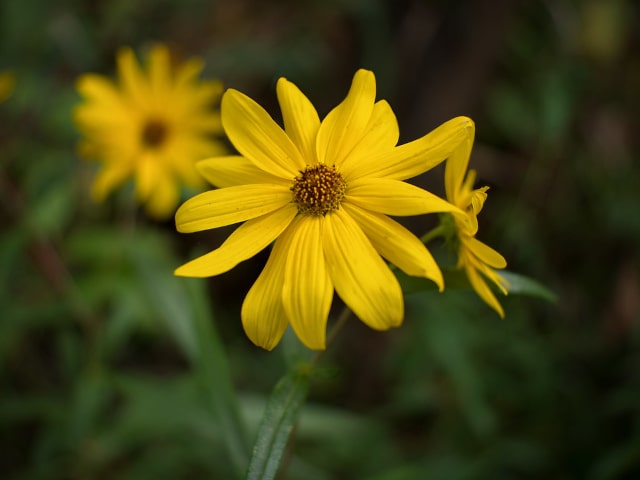
Helianthus Angustifolius, also known as Swamp Sunflower is a gorgeous perennial wildflower. It grows upright and in clumps, so it has a characteristic appearance. It is famous for its bright green leaves that are very glossy and thick. In the South, this plant is known as Mountain Daisy, because its flowers resemble a gorgeous mountain of daisies.
Keep in mind that this beautiful plant can reach about 6 feet and more in height, particularly in the sunny and moist part of the garden. Typically, the plant will grow between 5 and 7 feet in height, but some can be 10 feet tall. It also has spread of about 4 to 6 feet, but it can spread even wider.
Great Plant for Any Garden
There are many uses to Helianthus Angustifolius Swamp Sunflower. It is a great plant for any garden that can brighten the fall atmosphere with its gorgeous yellow flowers. These flowers look amazing in gardens, around cottages, in water-wise landscapes, perennial borders or roadsides. The sunflowers of this variety are also great nectar plant for various species of butterflies, and these animals can also use sunflowers as host plants for grouping.
If you wish to grow Helianthus Angustifolius Swamp Sunflower in your garden, you may pair it with other plants for the maximum visual effect. Also, some plants grow well with Swamp Sunflower, so this is another thing to take into account. Good companion plants for Helianthus Angustifolius Swamp Sunflower include Hibiscus moscheutos, Aster oblongifolius, Monarda fistulosa Schizachyrium scoparium and Panicum virgatum.
If there is some shade, you may substitute it with Helianthus decapetalus. The two are very similar when it comes to flower appearance and they have similar growing requirements. However, Helianthus decapelatus can do better in some shade.
Extend the Season in Your Garden
This plant is a very close cousin to the common and popular garden sunflower. Both are tall, bright plants that love sunlight. The main difference is in that Swamp Sunflower, as the name suggests, strongly prefers moist soil. It can thrive even in clay soil or poorly draining soil. If you live in areas that are wet, such as boggy spots that often remain waterlogged for extended periods, choosing Swamp Sunflower for your garden may be the best way to go.
This is a late-blooming sunflower that attracts butterflies in the fall. It blooms in gorgeous yellow colors, hence its name. It will extend the season in your garden until the frost. When younger, the plant has sturdy green or even purplish stems.
Helianthus Angustifolius Swamp Sunflower is known or its gorgeous foliage. Its leaves are linear or lance shaped, with long and narrow blades. The leaves are big: on average, they are 6 inches in length and about half of an inch in diameter. What is characteristic about these leaves is that they are sessile with no stalks. Typically, the surface of the leaves is very glossy, but it can also be opaque or even dull, so it is not a sign that there is something wrong with your plant.
Strong stems end with many flowerheads that are about 2 to 3 inches in size. These flowerheads consist of dark clusters shaped like a globe of disc florets that surrounds about 10 to 20 ray florets that are golden yellow in color.
Helianthus Angustifolius Swamp Sunflower is hardy in the USDA zones 5 to 9. They typically grow in the eastern USA, from New York to Florida and West all the way to Missouri, Texas and Oklahoma. They can be typically found in coastal plains, in the open or lightly shaded, moist areas. They often thrive in swamps, bogs, wet meadows, but also in open bottomland forests, savannas, pine barrens and coastal salt marshes. You can also find them in places such as wet flatwoods, disturbed wet areas, or roadsides, or even ditches.
These gorgeous plants flower late in the fall, and they are actually the latest flowering of all sunflowers. They start to bloom in September or October and continue until the first frosts. After blooming is done, the plant develops golden brown seed clusters. These provide a good source of food for the birds during the winter.
Helianthus Angustifolius Swamp Sunflower Care
Helianthus Angustifolius Swamp Sunflower is a plant that doesn't require much care. It can grow easily in almost any sunny spot, provided that the soil is moist or wet. This makes them great plants for beginner gardeners who wish to have some gorgeous flowers in the fall.
If you wish to grow Helianthus Angustifolius Swamp Sunflower in your garden, make sure that the conditions are favorable. Remember: this is a plant that prefers moist soil, so it is ideal for those living in wet areas. If this is not the case for you, make sure to water regularly and to let the plants sit in water for some periods of time.
That being said, it is best to choose loamy soil that is well drained, or clay soil. These sunflowers can tolerate some salt and even a bit of drought once they are established, but don't go overboard.
Also, you need to give your sunflower plenty of sun. This is a sun-loving plant, so make sure to choose an appropriate spot.
Do not fertilize your Helianthus Angustifolius Swamp Sunflower. It can quickly lead to stem weakness. You should prune your sunflower early in the summer, which will encourage stronger stems and denser growth. If you feel the stems are a bit weak, you may need to use some staking or other supports for your plants. However, even if the plant collapses under the weight of its flowers, it does not mean that it is not healthy.
Helianthus Angustifolius Swamp Sunflower is generally very pest resistant and not interesting to herbivores such as deer, so it doesn't have many enemies among the animal world. It means that it is generally left alone to grow undisturbed.
The quickest way to start Helianthus Angustifolius Swamp Sunflower is to simply buy it in a garden center. However, it is also possible to start these plants from seeds directly in your garden. Another method of propagation is through division: in this method, you are simply dividing a mature plant into segments that are then grown as individual plants.
Photo credit: Thomas Cizauskas
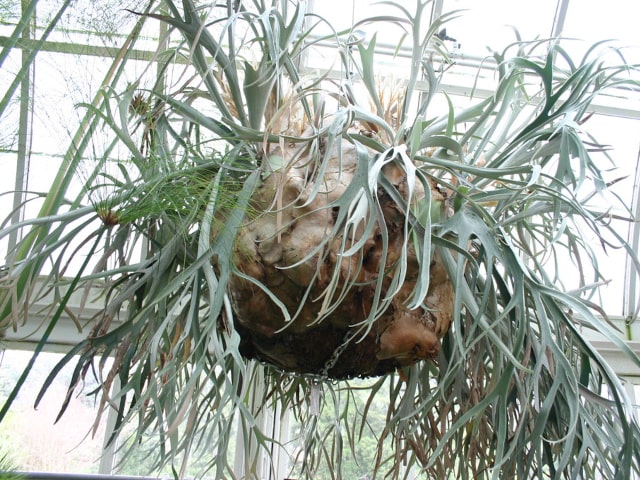
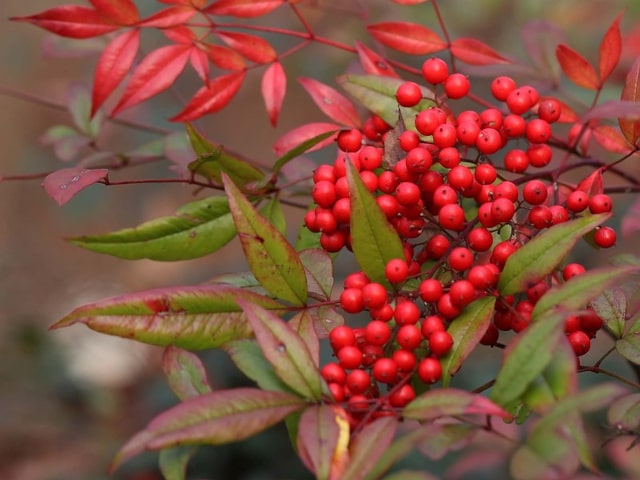
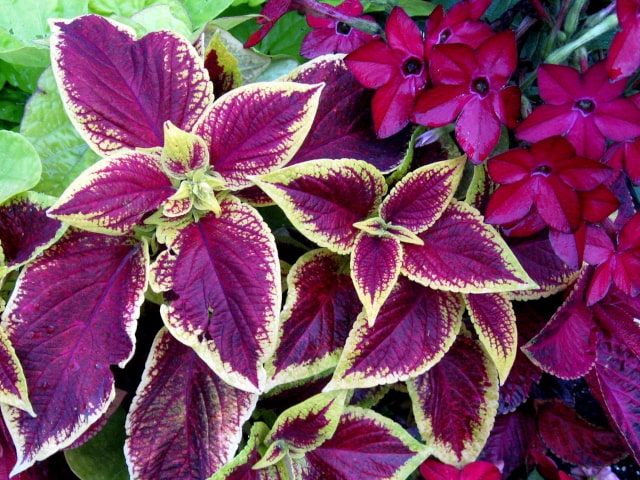
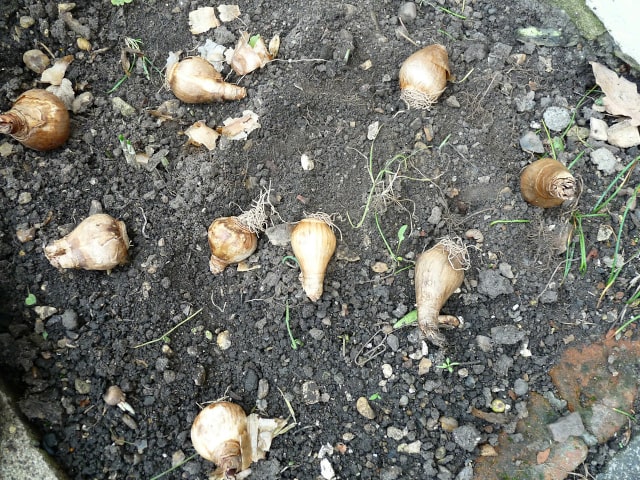
0 Comments